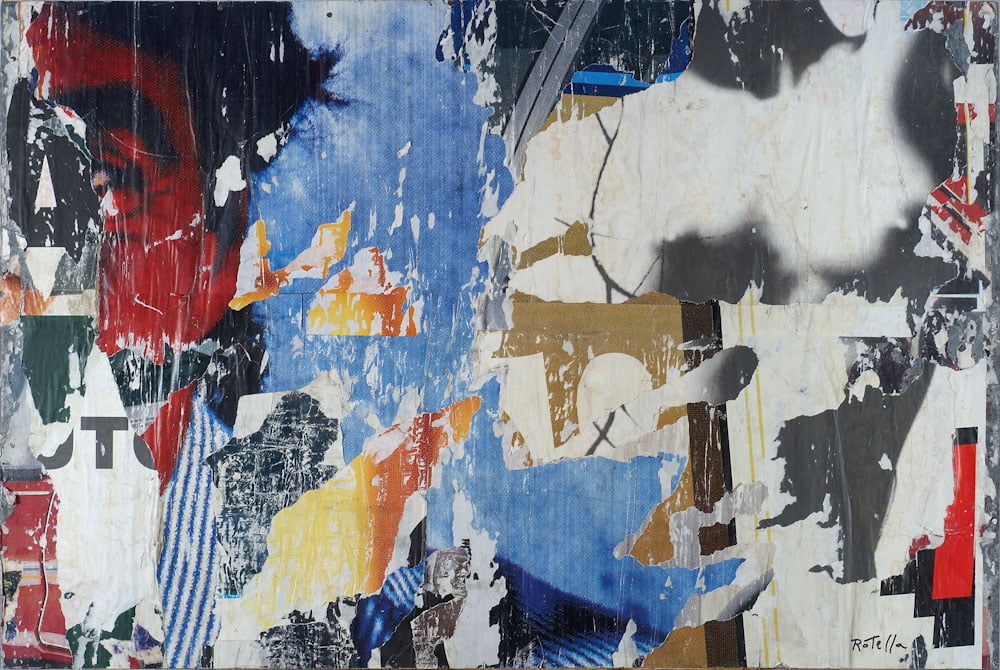Mimmo Rotella – Pasted Worlds
City streets have long been home to some of the most famous artwork. Exposed to the elements, street art both blends in with and defies its surroundings – posing the question of what is truly beautiful amidst urban visual chaos. The urban infrastructure provides an open air gallery, ready for installations and creative expression – from Basquiat, to Bansky, to the recent “Fearless Girl” popup statue. There was one artist who encapsulates for me the experimental, random beauty found on urban walls: Mimmo Rotella.
When I moved to Rome, I immediately noticed the abundance of rectangular billboards – about 3 feet x 5 feet – that line the streets. They appear at eye level. Paper sheets are continuously adhered and removed, creating a constantly shifting, accidental collage of current graphics and advertising, which are also rained upon and marked with graffiti and random, local flyers. The removal process is crude – ripped layers leave behind colored scraps and typographical bits. And the pasting process is often random – a new graphic placed a-tilt on corroded layers. The result is often surprisingly beautiful. I started making my own collages in a similar fashion – the SPQR series. I also snap street favorites on Instagram: #romanwallseries.

However, I’m certainly not a pioneer in appreciating and utilizing this technique. Besides the many masters of collage from art history, the artist Mimmo Rotella (1918 – 2006) specifically used this aesthetic throughout his career. While the Italian artist and poet began his career with the simplistic brush strokes of geometric abstractions, he soon began working with iconic imagery and eroding layers above and below them.
Invoking the structural nature of classic movie posters alongside the ambiguity of brightly torn signage, Rotella reimagined the roles of artistic expression in his self-proclaimed “double décollages.” Rotella’s “double décollages” created a sense of warped dimensions for those who viewed it. Deconstructed classic movie posters and idealized celebrities emerge through the torn paper; they are scratched and roughened. While at once marring the glossy graphics and photos, the works challenge the viewer to observe how our imagination reconstructs the broken imagery and perhaps re-idealize the subject despite its tattered presentation.

While the audience of the world may never encounter a new work of art from this inspiring creative, his mark through this technique resonates – especially as media has transformed from print to digital since his time. Each décollage reminds us that the chaos of the world is often the most imperative in creating beauty. Whether it was sculptures, photographs, written word or painting he used the soul of the worlds around him in transpiring evocative work. Thank you Rotella for reminding us that perhaps shying away from the disorder of our world’s may be more harmful than embracing the many intrinsic pieces that create the décollage of our lives.
His works are on view at the Gladstone Gallery in New York, March 4 – June 17, 2017.

